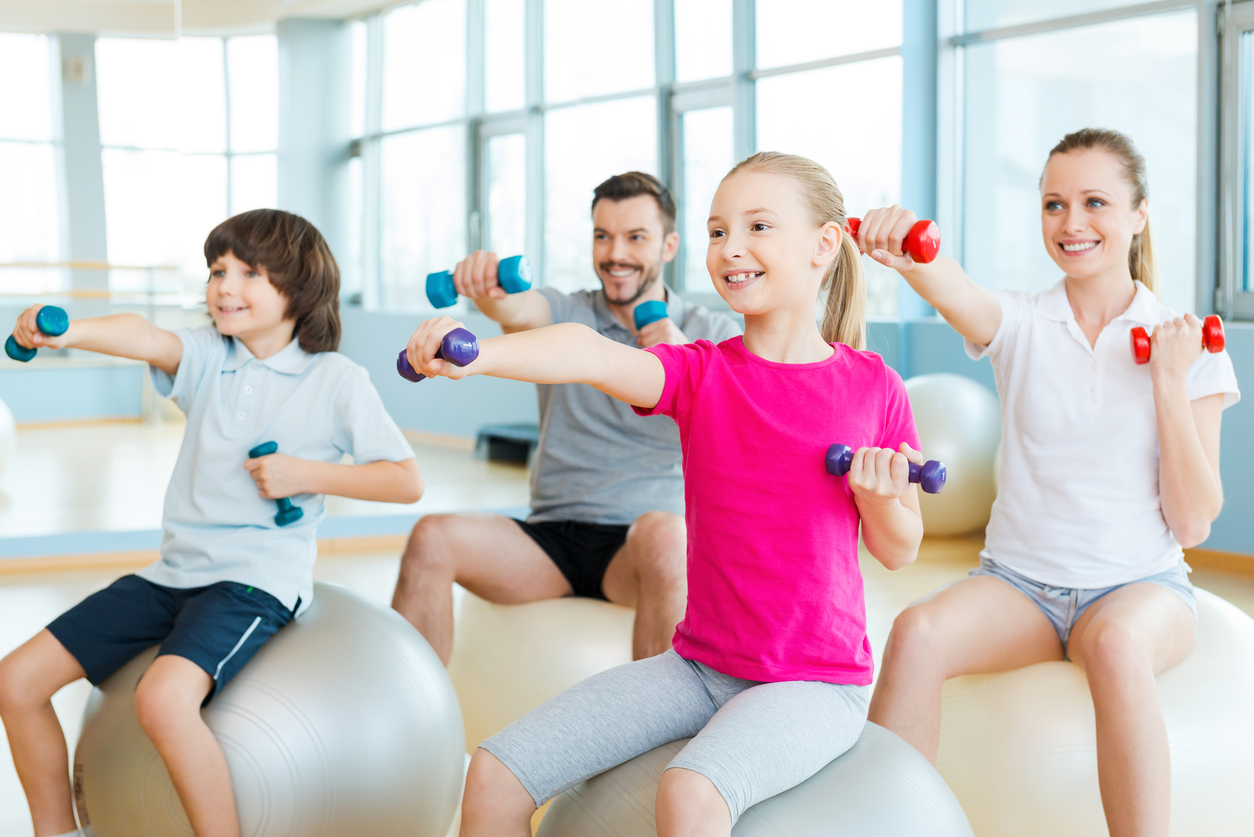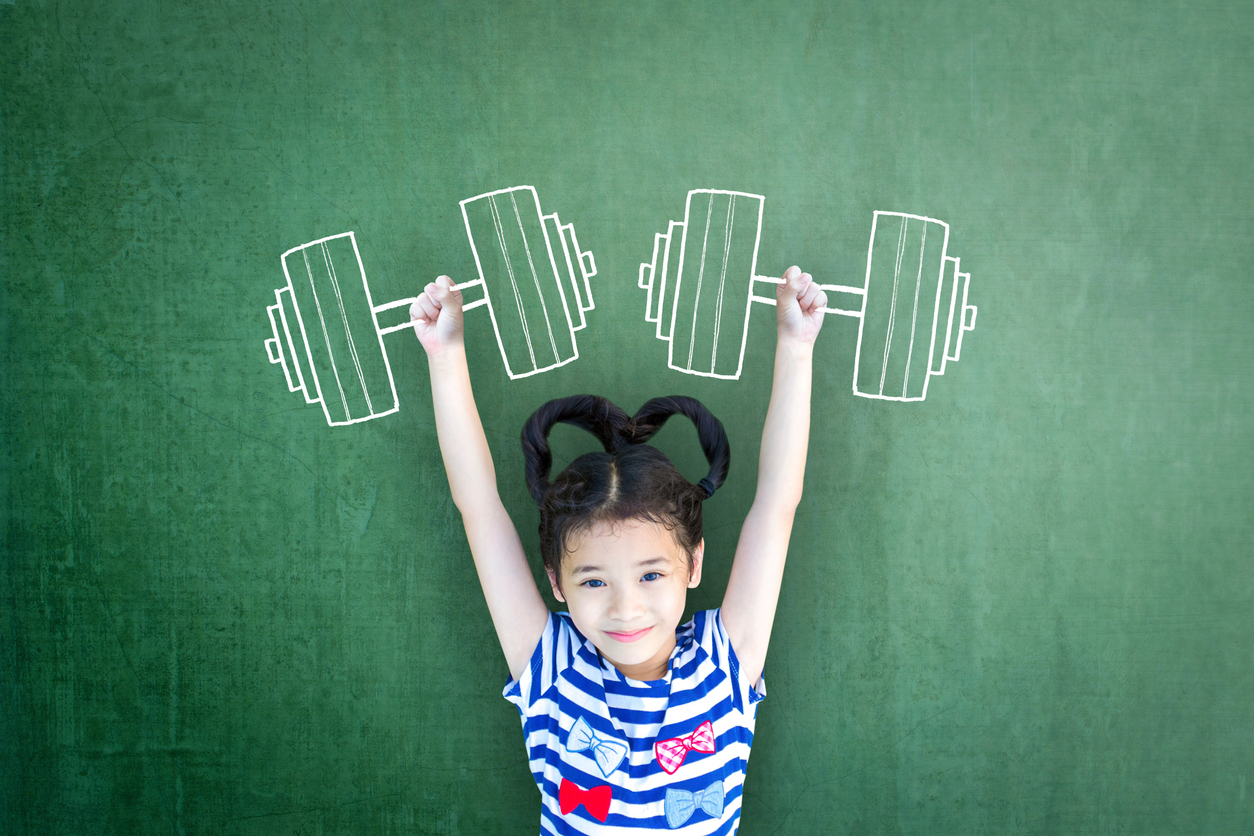~ Mike Hanik
Remembering Gym Class
For those of us who had negative experiences in Physical Education (PE) in a peer group school setting, I only have to mention a few evocative phrases and the case is closed. I’d rather do PE at home! Were you the last picked? Did you dread dressing out and showering off? Did you try not to listen to the locker room banter and hope you were not noticed? Whether we consider peer pressure, bullying, or a coach that yells for each to perform in a one-size-fit-all setting, a peer group school setting for physical education is a challenging context in which to learn anything, much less physical movement skills.
Youth Sports to the Rescue?
Few homeschooling parents long for the locker room experience for our children. We may, however, feel that the resources (namely space, equipment, and trained coaches) are hard to duplicate at home. So, many of us turn to organized sports as a way for children to get their physical education. Many are willing to tolerate the splintered schedule of different-aged children participating in different teams, the Sunday practices and games, and the effect on sit-down family dinner as the fast food creeps in. But, consider the sports environment where performance is graded on outcome, not on participation. When my son strikes out or my daughter misses the shot, everyone notices, some even groan, but what’s worse is my child feels it. Sure, I can rally their spirits after the game but why should I have to? I put them in sports to learn body movement skills, to become coordinated and athletic with the hope that it would lead to confidence and an appreciation for the joy of an active lifestyle. What I observe is that those children who were already good at sports enjoyed the game, while those that were not felt badly. Clearly my child is not physically prepared for sports, for performance, for competition despite the team practices and encouragement; but how will they learn basic body skills? We tell them to practice harder but little is done to guide their physical development in a balanced way. Is there a way to help my child become physically educated and confident without the pressure of performance, without the peer/social judgment, without the competition, without the failure? In other words, can I do P.E. at home in such a way as to fundamentally improve their body movement skills?
God’s Design
At this point I’ll make the case that the family environment is the ideal place for each member of the family, whatever age or ability, to learn and improve in body movements. To fully challenge this statement, we need to understand a little about how a body grows and develops. What do we mean when we speak of basic body movement skills? Let’s begin at birth. Neurological development for motor skills follows a defined pathway. The human brain is immature at birth. The parts of the brain mature in sequence beginning with the brainstem, which acts as a switchboard between the body and the brain, and progressing through the medulla for motor skills all the way to the cerebral cortex for cognitive functions. We observe this as developmental milestones and culturally we have a good idea of what these are and when they happen. First the child finds their hands and feet, then reaches and grabs, rolls over, sits up, crawls, pulls up, and then begins to walk. This program is built-in to the system and will run without our help. The main thing is to protect the process and nurture it when necessary. If the natural sequence is interrupted and motor skills are not properly developed, it will affect the higher cognitive functions. Perhaps you have heard about how important crawling is for motor development. What is also true is that crawling is important for reading as well. There are consequences for not following God’s plan. Thankfully, we can go back and remediate any developmental stage that was interrupted or under-stimulated. Even high-end athletes are going through crawling training to reinforce proper motor control. With this information we can begin to understand why one child may be less athletically inclined than another. It also explains why sports drills do not necessarily help improve performance as they may not be addressing the specific neurological and motor pathway weakness for that child. Perhaps my child is correct when he says in frustration, “I’m just no good at sports!” Pushing him to continue without the capacity to improve can have negative physical and emotional consequences.
Physical Education at Home
So what can I do as a parent? Do I have to become an expert in gross motor skill development? How can I help stimulate and challenge the entire motor pathway for my children to help them become stronger, more agile, more confidence and balanced? The good news is that we are designed to move. Movement is naturally fun. Healthy movement helps the body with joint mobility and health, general circulation, digestion and elimination, hormone balance, and overall organ function. As such, we feel better after we move around. So we don’t have to coerce our children to move, we only have to give them a proper context; namely space, time, and direction. But sending them out to run around and play does not constitute a movement training program. As with any discipline such as playing the piano, movement training requires variety and repetition. We canprovide a movement lesson plan that encourages and challenges the entire motor pathway. We should include crawling games, jumping, hopping, skipping, toss and catch, solo movements as well as team or partner activities. Unlike practicing musical scales on the piano, rehearsing repetitive body movements are often intrinsically fun. Children love to skip and crawl. The benefits to conducting a PE program at home are many. We gain family time and togetherness while engaging every member of the family in a participatory way. The younger siblings already accept that the older siblings can do more things so their experience is one of encouragement to try something new, instead of judgment from peers. There is little or no competition, or at least the competitive component can be easily managed. Often the age gap is reduced when we encourage these basic movements. We see this when the six-year-old discovers that the ten-year-old can’t shuffle very well either. Engaging in PE at home also helps with academic learning and stress reduction. Research shows that twenty minutes of structured movement activities can change a day of stress meltdown over math problems to efficient focus and learning. This benefit is enhanced when the movements actually engage the brain and stimulate the body’s natural motor pathways. Movement training at home prepares a child for an active lifestyle, which reduces the risk of injury, both physical and emotional. As basic athleticism improves, sports and other more targeted and demanding movements become easier and more enjoyable, not only at home but also out in a peer team environment.
In Conclusion
As a homeschooling family, we strive to provide a nurturing at-home learning environment where our children can learn, explore, and master basic life and academic skills while fostering their internal appreciation for all life and enhancing their on-going spiritual journey to know God. Promoting an active healthy lifestyle is totally in line with our homeschooling philosophy; indeed, it’s even a priority. Do our actions reflect that priority? We all know children learn by example. They learn our habits, they mimic our speech and movement patterns, they follow our example for how to live. Do I have an active lifestyle, an appreciation for the joy of movement? Perhaps I too can benefit from a PE program at home!
From the desk of Dr. Peter Minke.


